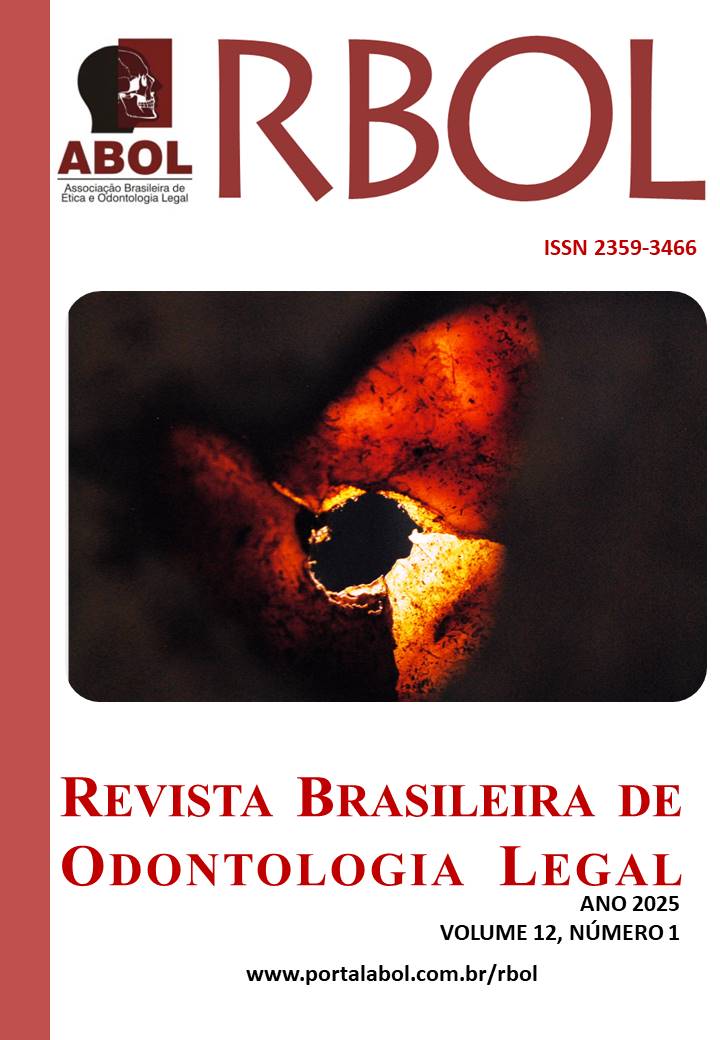RADIOGRAPHIC DENTAL AGE ESTIMATION APPLIED TO RECTIFICATION OF BIRTH RECORDS – A CASE REPORT
DOI:
https://doi.org/10.21117/rbol-v12n12025-597Palabras clave:
Adult, Age, Forensic dentistry, Retirement, TeethResumen
Introduction: Dental age estimation can be useful in criminal and civil scenarios. Among the civil applications of dental age estimation of adults is the rectification of legal documents, such as birth certificates. In this context, rectification is needed when birth registers are delayed or misfiled. The radiographic examination of teeth can be useful because it enables a non-invasive or destructive analysis of age-related parameters, namely the deposition of secondary dentin and the subsequent reduction of the pulpal space. This study reports a case of dental age estimation applied to the rectification of birth records. Case report: An adult male, who planning retirement, claimed to be 10 years younger than his current chronological age (50 years old). The man was referred to the State Medicolegal Institute for dental age estimation to aid the civil Court to decide whether rectification of birth records was necessary. Three non-invasive radiographic dental age estimation methods for adults were applied. One method was based on the linear measurements of the permanent mandibular right canine and first premolar, and the other two considered the pulp/tooth area ratio measured on the radiograph. Conclusion: The methods indicated that the individual was between 60-66 years, confirming his initial claim. Combined with medical and anthropological examinations, dental age estimation contributed to a case of legal rectification.
Descargas
Publicado
Número
Sección
Licencia
Os autores deverão encaminhar por email, devidamente assinada pelos autores ou pelo autor responsável pelo trabalho, a declaração de responsabilidade e transferência de direitos autorais para a RBOL, conforme modelo abaixo.
DECLARAÇÃO DE RESPONSABILIDADE E TRANSFERÊNCIA DE DIREITOS AUTORAIS
Eu (Nós), listar os nomes completos dos autores, transfiro(rimos) todos os direitos autorais do artigo intitulado: colocar o título à Revista Brasileira de Odontologia Legal - RBOL.
Declaro(amos) que o trabalho mencionado é original, não é resultante de plágio, que não foi publicado e não está sendo considerado para publicação em outra revista, quer seja no formato impresso ou no eletrônico.
Declaro(amos) que o presente trabalho não apresenta conflitos de interesse pessoais, empresariais ou governamentais que poderiam comprometer a obtenção e divulgação dos resultados bem como a discussão e conclusão do estudo.
Declaro(amos) que o presente trabalho foi totalmente custeado por seus autores. Em caso de financiamento, identificar qual a empresa, governo ou agência financiadora.
Local, data, mês e ano.
Nome e assinatura do autor responsável (ou de todos os autores).

